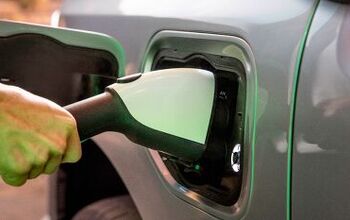Biodiesel: Boondoggle or Blessing? Green Earth Gives It a Go
Under the Energy Conservation Reauthorization Act of 1998, federal, state, and public utility fleets can meet their alternative fuel requirements by tanking-up with biodiesel. As a direct result, The National Biodiesel Board reports sales of the vegetable oil and and diesel brew have risen to 225m gallons per year, heading for an estimated 2b gallons by 2015. Carpe-ing the diem, Green Earth Fuels has started production of biofuels in Houston. Using a proprietary system, Green Earth's aiming to cook-up some 45 million gallons of biodiesel per year. "The time has come for a national biodiesel infrastructure that is safe, sustainable, progressive and commercially viable," says Greg Bafalis, Green Earth’s president and CEO. Wall Street tycoons (The Carlyle Group, Riverstone Holdings and Goldman Sacks) are bankrolling Bafalis' faith in alt. fuel serendipity. But the rising price of vegetable oils and the possibility that Uncle Sam may remove its biofuel "incentives" have some investors spooked– while Washington lobbyists continue to cash large checks.
Glenn is a baby-boomer, born in 1954. Along with his wife, he makes his home in Connecticut. Employed in the public sector as an Information Tedchnology Specialist, Glenn has long been a car fan. Past rides have included heavy iron such as a 1967 GTO, to a V8 T-Bird. In between those high-horsepower cars, he's owned a pair of BMW 320i's. Now, with a daily commute of 40 miles, his concession to MPG dictates the ownership of a 2006 Honda Civic coupe which, while fun to drive, is a modest car for a pistonhead. As an avid reader, Glenn enjoys TTAC, along with many other auto-realated sites, and the occasional good book. As an avid electronic junkie, Glenn holds an Advanced Class amateur ("ham") radio license, and is into many things electronic. From a satellite radio and portable GPS unit in the cars, to a modest home theater system and radio-intercom in his home, if it's run by the movement of electrons, he's interested. :-)
More by Glenn Swanson


































Comments
Join the conversation
Uncle Sam is a bit dimmer than what you give him credit for. Basically, there are two fuels that can be made from lipids (biological oils or fats): biodiesel and green diesel. Making biodiesel involves a very precise chemical reaction known as transestrification. You basically replace glycerol with methanol. The resulting fuel has good lubrication and emissions properties. It also has a tendency to gel at low temperatures which leads to all sorts of problems. Ask Minnesota truck drivers about that one. Note that B2 means all of 2% biodiesel mixed in with regular diesel. The other thing you can do with lipids is to treat them the way refineries treat crude oil: heat it up and let it break down in the products you want. There are different variations of this. Changing World Technologies has a two step process that rips out the glycerol and sends it to waste. ConocoPhillips working with Tyson Foods (to source the feedstock) has a version that uses hydrogen (available at most refineries). In both cases the product is chemically almost identical to fossil diesel, except that it's cleaner (no sulfur or aromatics). So, faced with the opportunity to fund these two processes, what did Uncle Sam do? Fund the one that converts food into fuel (that makes sense) and buys some votes in the Midwest, of course. Afterall, we can't allow an oil company to do something green, can we?
Did anyone see the story about how it may be greener to drive to the store than walk? Supposedly, it takes so much energy to grow and transport food nowadays that the embedded fuel usage in a calorie of food makes walking a pollution event. God forbid you might exercise!
If it's cheaper, it uses less energy. Depending on what you eat, what you drive, and how much you weigh, that story may be true.
A study by German researchers found that -- at least for rapeseed oil -- that SVO (straight vegetable oil) and biodiesel blends exhaust emissisons have more mutagenic compounds than straight petrochem diesel. I suppose killing off the population with cancer from biodiesel emissions is one way to reduce Social Security spending.